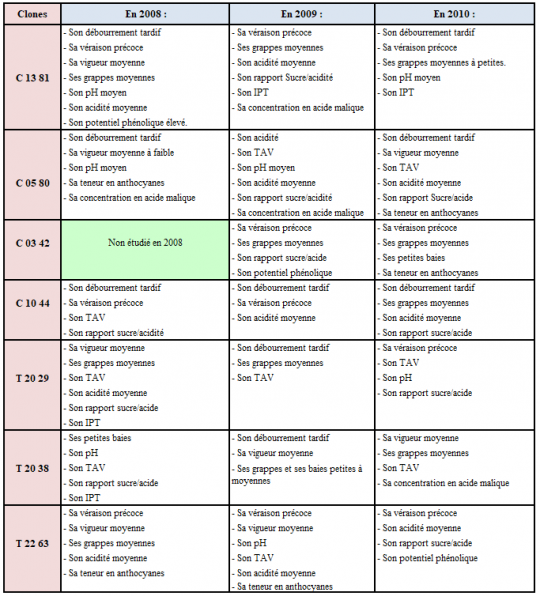Over the past few years, Château Latour has been heavily involved in viticulture research and development projects. Several trials have been conducted internally regarding the massal selection of individual varietals. The aim is to enhance genetic diversity in the vineyard and preserve the character and terroir expression of old vines at Château Latour, thereby perpetuating the unique genetic heritage of our vineyards.
1.4.2.c Experiment findings: Massal selection of Cabernet Sauvignon
Method
The project began in 1993 with the selection of the best qualitative 100-year-old Cabernet Sauvignon vines from the "Pièce de Latour" and "Pièce du Château" plots. The selected vines were tested and found to be virus-free. They were propagated and replanted in 1995 on a "conservatory" plot. About ten years later, a second massal selection was carried out over three years, between 2008 and 2010 on this same conservatory plot. The aim was to provide the Estate with a solid vine bank for future plantings of Cabernet Sauvignon, given its status in the Latour vineyard as a truly emblematic grape variety.
Various parameters were measured throughout the vegetative cycle. The objective of this selection was twofold, since in addition to preserving the uniqueness of the vineyard, clones best adapted to climate change needed to be selected. Clone choice was based on various criteria, the main ones being as follows:
- A semi-late bud break to limit increasing risks of frost damage,
- Average to low vigor (depending on the terroir),
- The lowest possible pH when ripe to limit various risks during vinification and maturation (SO2 combination, physical, chemical and microbiological stability, etc.),
- High content of anthocyanins and total polyphenols (TPI).
Analysis
We analysed findings from pedology studies to take into account the role that both soil and climate play regarding plant behavior:
-Soil pits
-Water balance (basic leaf water potential, Delta C13, gather climate data to better understand the different nature of the vintages throughout the study)
-Nitrogenous feed
-Apparent vigor (?)
Other analysis helped categorize the differences between clones:
-Phenological stages (date of budburst, date of flowering, date of veraison)
-Vigor evaluation (growth and growth rate of branches, average length of branches, number of clusters and fertility)
-Cluster characterization (average cluster weight, fruiting, weight of 100 berries)
-Control of oenological potential (technological and phenolic maturity, micro-vinifications carried out at the Gironde Chamber of Agriculture).
A few findings
Once the analysis stage was completed, a "scoring" system was devised. The scoring scale ranged from 1 for an "early" and/or "high" condition to a maximum score of 14 for "late" and/or "low" condition. Once scored, the data identifying each characteristic of the conservatory plot clones were collated in a table format.
Results
The study concluded in 2010 by singling out the clones that best met Château Latour's selection criteria.
The clones C 13 81, C 05 80, T 20 51 and T 22 63 stood out from the rest during the three years of the study (2008, 2009 and 2010) and seemed to show specific agronomic and oenological benefits. They were subject to a micro-vinification trial which ended in July 2011 with several tasting sessions.
However, the task of selection was arduous and other clones, notably C0767, C 0326, C 0342 and C 1403, also showed interesting adaptive characteristics that could not be disgarded, especially in the context of a complex and ever-evolving climate.


